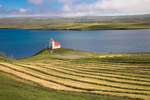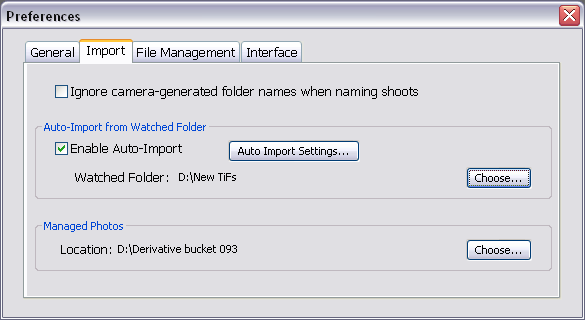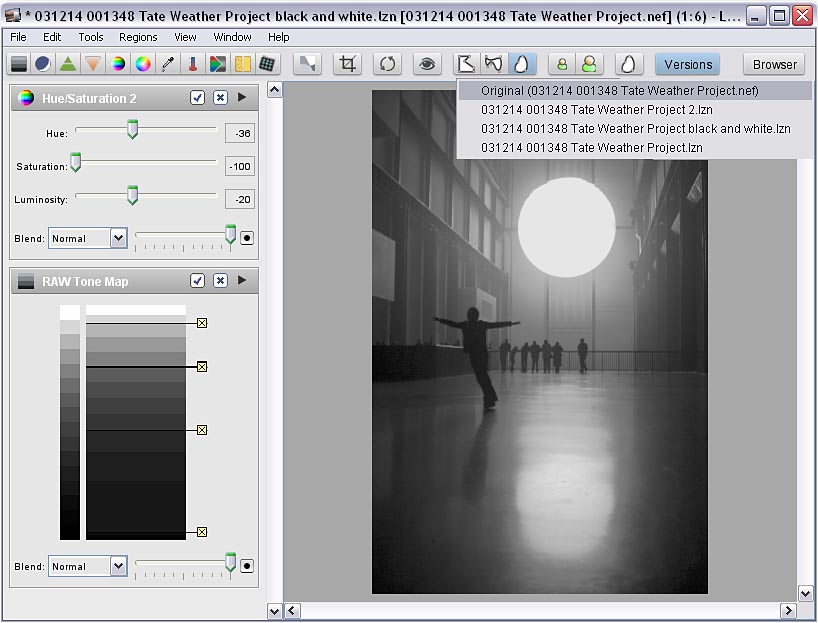You can really end a presentation on a bang when you demonstrate a product and then tell your partly-Mac audience that one minute ago the company was sold to Microsoft. But there I was yesterday at Old Trafford doing a one hour presentation on DAM with iView. It began at 4 and iView had called me the previous day to say that the takeover announcement was (coincidentally) due at 5pm. Well, we United fans are used to last minute winners, aren't we?
I'm not sure what to make of the news but a takeover isn't a surprise. At the Brick Lane iView Fest last week, or more accurately over a curry with Peter Krogh (his view of the takeover) and iView's Phil Hayward, I remember saying I was amazed iView hadn't already been acquired by someone. I really expected Adobe, and feared it might be Apple or Corel, but I didn't really think of Microsoft. I'm a little surprised they didn't acquire RawShooter too. Who next - Adobe?
Though I feel slightly sad about the company's disappearance into a much larger entity, it's certainly an interesting move and could be very positive for the program's users. Maybe MediaPro can now get the high end features it needs, such as network mulituser capability and a server back end? Or perhaps it'll gain a raw processing engine along the lines of Aperture and Lightroom? Meanwhile the basic iView program could be destined to become a Picasa-style freebie. Equally I wouldn't be surprised if iView is soon starved of attention and ossifies in its Redmond cubicle. Who knows?
No doubt it's the right time to sell. There'll soon be a new acronym for the combined DAM plus raw processing programs that follow Aperture, programs that are database-driven like iView but also store sets of instructions or metadata about editing steps. I propose DAMP - digital asset management processors. If iView doesn't soon become a DAMP program, it'll lose a lot of its appeal.
Most of all, I hope iView keeps two closely-intertwined strands of its “culture”. One is the two-way discussion of product developments which reminds me of the great early days of Macromedia and Dreamweaver. A good example of this interaction was when they recently withdrew the ability to write metadata back to Nikon raw files. They explained they had experienced problems with Nikon's libraries but reversed the decision when users expressed their views. The second important strand is the interim releases. You don't have 18 months of waiting fingers-crossed for the next full version before you see product improvements (yesterday I heard someone say they bought Aperture not because of version 1 but because of what version 3 would be). Many companies pay lip service to continuous improvement programs - iView delivers. Keep the pot bubbling and you gain customer loyalty.
Of course, already some users of Apple-brand computers are complaining loudly, and swearing they'll never put a penny into Redmond's wallet. For some it's their first (only) post at iView's forum. Others parade their tearfulness at multiple forums, while at Peter Krogh's forum one apostrophe-challenged poster complains “Iviews annual sales volume isn't going to be even a blip on Microsofts balance sheet” - dead right, you don't get sales on anyone's balance sheet. I've not yet read anyone trotting out the old “Apple makes me more creative” carthorse, but maybe Microsoft will make them more organized too?
I've been close to a number of similar-sized software firms that have been bought by Microsoft and it can go both ways. These were all in the area of financial software but there's nothing so special about imaging - other than being more fun - that makes the analogy invalid. Some really elegant products vanished without trace, with their developers marooned in Fargo in distant, flat North Dakota, while others thrived on the investment. Time will tell. Deep down I wonder if we'll all be using Lightroom by the time we know what the outcome will be.
There's a nice Italian expression “in bocca al lupo”. Its direct translation is “in the mouth of the wolf” but it's the way you wish people good luck. 🙂
 O'Reilly's Lightroom Adventure sounds fun - as a two time Iceland visitor, I'm always very jealous of anyone going there. Then again, I don't really think photographers are pack animals - certainly I always scowl (at least inwardly) when another photographer invades my domain or nibbles at my prey. Maybe this explains the absence of photos by Peter Krogh - I've seen pictures by most of the “names” on the trip, this one being by O'Reilly's Derrick Story, but no sign of Peter. Has he headed off into the wilderness, or is Lightroom much less of a DAM tool than some of us would like? In the beta 3, you can't even move files from one folder to another, or rename them after the initial import.
O'Reilly's Lightroom Adventure sounds fun - as a two time Iceland visitor, I'm always very jealous of anyone going there. Then again, I don't really think photographers are pack animals - certainly I always scowl (at least inwardly) when another photographer invades my domain or nibbles at my prey. Maybe this explains the absence of photos by Peter Krogh - I've seen pictures by most of the “names” on the trip, this one being by O'Reilly's Derrick Story, but no sign of Peter. Has he headed off into the wilderness, or is Lightroom much less of a DAM tool than some of us would like? In the beta 3, you can't even move files from one folder to another, or rename them after the initial import.

